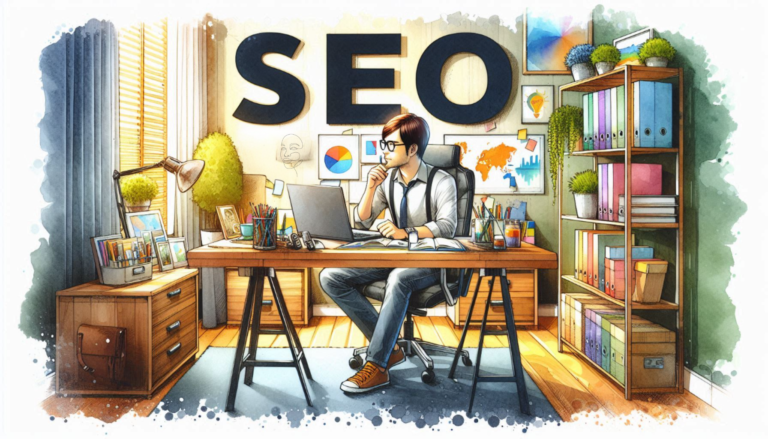Introduction:
Hey there, future e-commerce mogul! So, you’re thinking about starting an online store with WordPress? Well, you’ve come to the right place! I’m here to walk you through the process, step by step, and trust me, it’s easier than you might think. Did you know that WordPress powers over 40% of all websites on the internet? That’s right, and with good reason! It’s user-friendly, flexible, and perfect for creating your dream online store. Whether you’re selling handmade crafts, digital products, or the next big thing, I’ve got you covered. Let’s turn that brilliant idea of yours into a thriving online business!
Choose Your Domain Name and Hosting
Alright, future e-commerce superstar, let’s kick things off with the foundation of your online empire: choosing your domain name and hosting. Trust me, this is where the fun begins!
First up, let’s talk domain names. Think of it as your store’s digital address – you want it to be catchy, easy to remember, and totally you. I always tell my friends to brainstorm words related to their business, play with puns (if that’s your style), and keep it short and sweet.
Avoid hyphens and numbers if you can; they’re like speed bumps for typing. Once you’ve got a few ideas, check if they’re available. If your dream name is taken, don’t sweat it! Get creative with suffixes like ‘shop’, ‘store’, or ’boutique’. Remember, your domain is your brand, so make it count!
Now, onto hosting – the digital real estate where your store will live. Folks, I can’t stress this enough: reliable hosting is crucial! It’s like choosing a location for a physical store. You wouldn’t set up shop in a dodgy neighborhood with frequent power outages, right? Same goes for your online store. Look for hosts with excellent uptime (that’s how often your site is accessible), fast loading speeds, and stellar customer support.
Some of my top picks for WordPress hosting include Bluehost, SiteGround, and WP Engine. They all offer one-click WordPress installation, which is a real time-saver when you’re just starting out.
When it comes to selecting the right hosting plan, think about where you want your business to be in a year or two. Starting small? A shared hosting plan might do the trick. But if you’re dreaming big (and I hope you are!), consider a managed WordPress hosting plan. It’s like having a tech-savvy best friend who takes care of all the behind-the-scenes stuff. Look at factors like storage space, bandwidth, and the number of sites you can host.
And here’s a pro tip: many hosts offer money-back guarantees, so you can test drive their service. Remember, as your store grows, you can always upgrade your plan. The key is to start with a host that can grow with you. Now, with your domain and hosting sorted, you’re one step closer to e-commerce stardom!
Install WordPress and Set Up Your Site
Alright, e-commerce enthusiasts, it’s time to roll up our sleeves and dive into the wonderful world of WordPress! Don’t worry if you’re feeling a bit nervous – installing WordPress is easier than assembling IKEA furniture, and way more fun!
First things first, let’s get WordPress up and running. If you chose a host with one-click installation (high five if you did!), you’re in for a treat. It’s literally as easy as clicking a button and filling out a form. Boom! You’ve got WordPress. If you’re going the manual route, don’t panic! It’s like following a recipe – download WordPress, upload it to your host, create a database, and run the installation. Before you know it, you’ll be staring at your very own WordPress dashboard, feeling like a tech wizard.
Now that you’re in, it’s time to make your site feel like home. Head over to the Settings menu and start configuring. Think of it as decorating your new apartment – you want everything just right. Set your site title (make it snazzy!), choose your timezone (unless you want to accidentally launch sales at 3 AM), and decide on your permalink structure (I’m a fan of the post name option – it’s great for SEO). Oh, and don’t forget to tell search engines it’s okay to index your site. You want to be found, right?
Here comes the fun part – choosing a theme! It’s like picking an outfit for your website. Browse through the WordPress theme directory or check out premium themes. Look for one that’s e-commerce ready and matches your brand’s personality. Is your brand fun and quirky? Sleek and modern? There’s a theme for that! Once you’ve found “the one,” customize it to make it uniquely yours. Add your logo, play with colors, and arrange your homepage. And remember, just like your high school hairstyle, you can always change it later.
Last but not least, let’s talk plugins – the secret sauce of WordPress functionality. Think of plugins as superpowers for your website. Some must-haves include an SEO plugin (Yoast SEO is my go-to), a security plugin (because nobody likes uninvited guests), and a caching plugin (to make your site faster than Usain Bolt). And of course, don’t forget an e-commerce plugin – but we’ll get to that in a bit. Just remember, while plugins are awesome, don’t go overboard. Your site doesn’t need to be the Batman of websites with a utility belt full of every plugin known to mankind.
And there you have it! Your WordPress site is set up and ready to be transformed into an e-commerce powerhouse. Take a moment to bask in your accomplishment – you’re now officially a WordPress wizard. Next up, we’ll turn this baby into a full-fledged online store. Exciting times ahead, my friend!
Install and Configure WooCommerce
Alright, e-commerce enthusiasts, it’s time to turn your WordPress site into a money-making machine with WooCommerce! Trust me, this plugin is like the Swiss Army knife of e-commerce – it’s got everything you need to start selling faster than hot cakes at a lumberjack convention.
First off, why WooCommerce? Well, it’s free, it’s powerful, and it’s more customizable than a build-your-own burrito bar. Plus, it’s specifically designed for WordPress, so they go together like peanut butter and jelly. Installing it is a breeze – just hop into your WordPress dashboard, go to Plugins > Add New, search for WooCommerce, and hit that Install button. Once it’s activated, you’ll be greeted by the setup wizard. It’s like having your own personal e-commerce fairy godmother, guiding you through the process!
Now, let’s talk about configuring those essential settings. This is where the magic happens, folks! You’ll set up your payment gateways (because who doesn’t love getting paid?), configure shipping options (unless you’re selling downloadable products, in which case, lucky you!), and sort out those pesky taxes (I know, I know, but we gotta do it).
WooCommerce makes this process surprisingly painless, with step-by-step instructions that are easier to follow than a GPS. Just remember, when it comes to payments, offer as many options as you can. The easier you make it for customers to throw money at you, the better!
Finally, it’s time for the fun part – adding products! This is where your store really comes to life. WooCommerce lets you add products faster than a kid in a candy store, complete with descriptions, images, prices, and even variations (small, medium, large, extra-large, galaxy-sized – you name it!). And don’t forget about organizing your catalog. Create categories and tags to make your store easier to navigate than a mall with really good signage.
Before you know it, you’ll have a fully stocked online store that’s ready to take the e-commerce world by storm. So go ahead, add those products, and get ready to watch the sales roll in!
Design Your Store for Success
Alright, my e-commerce comrades, it’s time to give your online store a makeover that’ll make even the Kardashians jealous! Let’s turn that digital storefront into a conversion machine that’s smoother than a fresh jar of Skippy.
First up, let’s talk layout. You want your store to be easier to navigate than a mall with really good signage. Keep it clean, keep it simple, and for the love of all things holy, don’t make your customers click more than necessary. Think of your homepage as your store window – make it pop! Use high-quality images, clear calls-to-action, and maybe even a sprinkle of FOMO (Fear Of Missing Out) with limited-time offers. Remember, we’re not just selling products here, we’re selling an experience!
Now, let’s zoom in on those product pages. This is where the magic happens, folks! Your product pages should be more persuasive than a used car salesman on commission. Use high-quality images (and lots of ’em), write descriptions that make people want to lick their screens, and don’t forget to showcase those glowing customer reviews.
Oh, and make your ‘Add to Cart’ button so irresistible that customers can’t help but click it. It should be like a big red button labeled “DO NOT PUSH” – everyone knows what happens next!
Don’t forget about those essential pages – they’re like the supporting actors in your e-commerce blockbuster. Your ‘About’ page is your chance to tell your brand story (make it more captivating than a Netflix series), your ‘Contact’ page should be easier to find than free samples at Costco, and your ‘Terms of Service’… well, let’s be honest, nobody reads those, but they’re important to have.
And here’s the kicker – make sure your site looks fantastic on mobile. More and more people are shopping on their phones these days, so if your site isn’t mobile-friendly, you might as well be selling rotary phones to millennials.
Remember, designing your store isn’t just about making it pretty (although that helps). It’s about creating an experience that’s so smooth, so enjoyable, that customers can’t help but hit that ‘Buy Now’ button. So go forth, my e-commerce warriors, and design a store that’s more addictive than cat videos and more profitable than a lemonade stand in the Sahara!

Set Up Payment and Shipping Options
Alright, e-commerce rockstars, it’s time to talk money and shipping – the lifeblood of your online store! Let’s make sure your customers can pay you easier than slipping a $20 to their favorite bartender and get their goodies faster than a pizza delivery on game night.
First up, payment gateways – the unsung heroes of e-commerce. You’ve got options, my friends! Popular choices include PayPal, Stripe, and Square. Each has its own perks, so choose wisely. PayPal is like the popular kid in school – everyone knows it. Stripe is the cool, techy option with slick integration.
And Square? It’s great if you want to sell in-person too. The key is to offer options. Some folks swear by PayPal, others are credit card die-hards. Be like a Boy Scout – always prepared!
Now, let’s talk shipping. This can be trickier than a game of Twister, but don’t sweat it! Start by setting up your shipping zones – local, national, international. Then, decide on your methods. Free shipping? Flat rate? Weight-based? The choice is yours, but remember – unexpected shipping costs are the number one cause of abandoned carts. Nobody likes surprises at checkout (unless it’s a discount code)!
Taxes – everyone’s favorite topic, right? (Said no one ever.) But fear not! WooCommerce has got your back. You can set up tax rates for different locations faster than you can say “IRS audit.” Just make sure you’re charging the right amount for each area. Pro tip: consider tax-inclusive pricing to avoid sticker shock at checkout.
Finally, let’s create a checkout process smoother than a freshly waxed surfboard. Keep it simple, folks. The fewer steps, the better. Offer guest checkout for those commitment-phobes out there. Make sure your forms are mobile-friendly (nobody wants to squint at tiny text while entering their credit card info). And for the love of all things holy, make that ‘Place Order’ button big, bold, and impossible to miss!
Remember, a smooth payment and shipping process is like a well-oiled machine – it keeps your e-commerce engine running at top speed. So set it up right, and watch those orders roll in faster than you can say “cha-ching!”
Market Your New Online Store
Alright, e-commerce enthusiasts, it’s time to shout about your store from the digital rooftops! Let’s turn your online shop into the hottest destination since Disneyland opened its gates. Buckle up, because we’re about to dive into the wild world of marketing!
First up, social media – it’s not just for cat videos and food pics anymore. It’s your new best friend in the e-commerce world! Create accounts on platforms where your target audience hangs out. Instagram for the visual crowd, Facebook for the, well, everyone, and TikTok if you want to reach the cool kids. Post regularly, engage with your followers, and don’t be afraid to show some personality. Remember, social media is like a cocktail party – nobody likes the guy who only talks about himself. Mix in some fun content with your product posts, and you’ll be the life of the digital party in no time!
Now, let’s talk SEO – three little letters that can make a big difference. Think of it as the treasure map that leads customers to your store. Use relevant keywords in your product descriptions, meta tags, and blog posts. Yes, you heard me right – start a blog! It’s a great way to improve your SEO and show off your expertise. And don’t forget about those product reviews – they’re like SEO gold. Encourage your customers to leave reviews, and watch your search rankings climb faster than a cat up a Christmas tree!
Email marketing might sound as exciting as watching paint dry, but trust me, it’s a powerhouse for e-commerce. Build that email list like it’s your job (because, well, it kind of is). Offer a juicy discount for signing up, send out regular newsletters with your latest products, and don’t forget those abandoned cart emails – they’re like a digital tap on the shoulder saying “Hey, you forgot something!” Just remember, nobody likes a spammer, so keep it valuable and don’t overdo it].
Finally, let’s talk paid advertising. It’s like strapping a rocket to your marketing efforts. Google Ads can get you in front of people actively searching for your products. Facebook and Instagram ads let you target your ideal customers with scary precision. And don’t forget about retargeting – those ads that follow you around the internet after you’ve visited a site. They might seem creepy, but they work! Start small, test different approaches, and scale up what works.
Remember, marketing your online store is a marathon, not a sprint. Keep at it, stay creative, and don’t be afraid to try new things. Before you know it, you’ll have more customers than you can handle. And when that happens, well, that’s a problem we’d all like to have, right?
Conclusion:
Congratulations! You’re now armed with the knowledge to start your very own online store with WordPress. Remember, every successful e-commerce business started somewhere, and you’re already on your way. Don’t be afraid to experiment, learn from your experiences, and most importantly, have fun with it! Your online store is more than just a website – it’s your digital storefront to the world. So, what are you waiting for? It’s time to turn that dream into reality. Get out there, start building, and who knows? Your store might just be the next big thing in e-commerce. Happy selling!
Get Started on ECWID TODAY for FREE 👇🏼👇🏼






